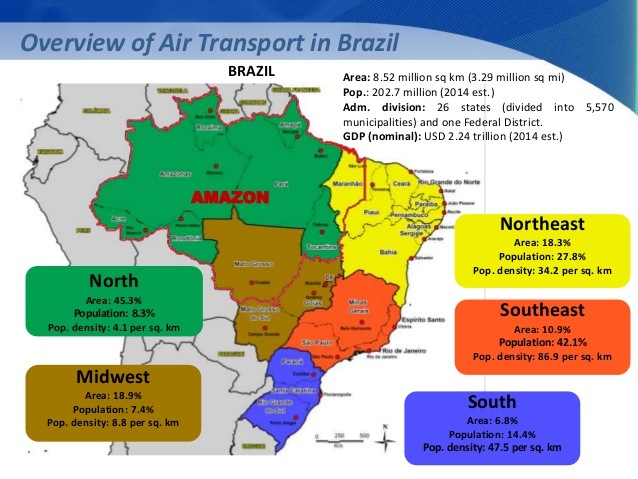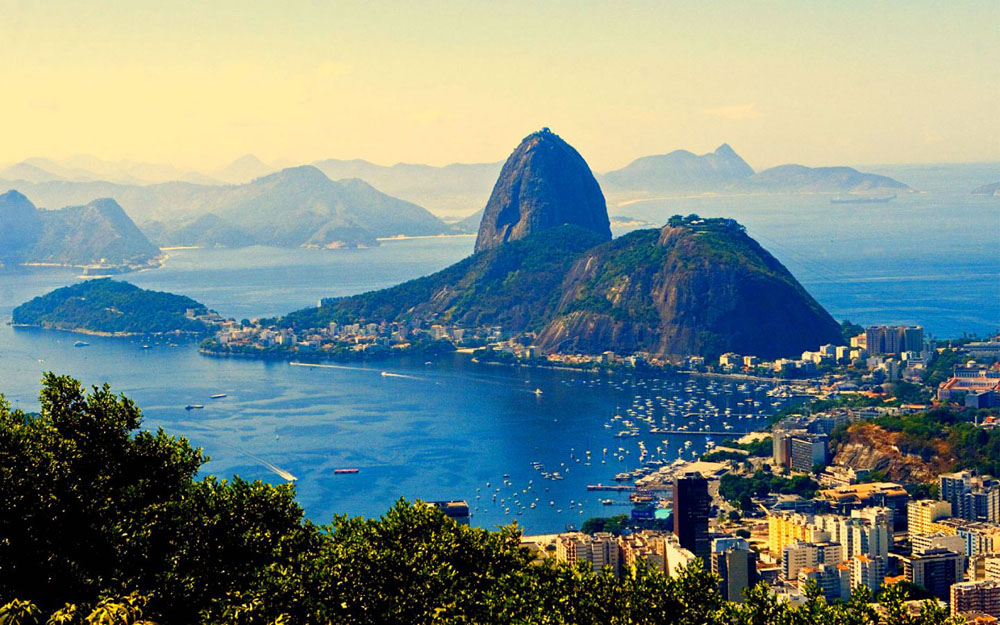RIO DE JANEIRO, BRAZIL – Brazil has yet to regain the economic level it recorded at the peak of activity before the crisis erupted five years ago. Throughout the country, however, economic performance has not been uniform.

The Midwest and South, according to the Itaú index for business activity — which includes formal jobs, trade, industry, and agriculture — are the two regions that have reached or overtaken the level they exhibited in March 2014. The downward spiral of the national Gross Domestic Product (GDP) began at this point, according to the bank.
“Commodities, which supply the foreign market, have favored the South and Midwest because the international demand was higher than that of activities that depend on the domestic market,” explains Paula Yamaguti, an economist at Itaú Unibanco.
The other regions, North and Northeast, performed similarly to the national average, while the Southeast stood at the bottom. “Industry was the indicator to have the worst performance in these years — and as most of the industry is in São Paulo, this has pushed the result downwards,” she says.
According to Itaú’s survey, the economy in Brazil is slightly more than four percentage points below the level it showed five years ago.
Among the regions, the only one that comfortably topped its activity from five years ago was the Midwest (Mato Grosso, Mato Grosso do Sul, Goiás), in the first quarter of 2019. The South (Paraná, Santa Catarina, Rio Grande do Sul), on the other hand, was at zero to zero in the period (at the end of March, it was 0.25 percentage points below the 2014 level).
The State of São Paulo, with a performance below the national average, was affected by its own mega-businesses, according to economist José Roberto Mendonça de Barros, of MB Associados.

“São Paulo suffers because it contains the majority of industries, but there is no structural issue pressing the São Paulo economy. With the approval of the reforms, there is a real chance of recovering.”
The same cannot be said of Minas Gerais and Rio de Janeiro, according to Mendonça de Barros. “Rio, in particular, is experiencing the perfect storm, a crumbling of the regional system, something that will take a long time to rebuild.”
Rio de Janeiro, along with Bahia and Sergipe, is among the most fragile economies in Brazil. According to Itaú’s activity index, the level of the economy in these states is more than eight percentage points lower than in 2014.
Rio leads the country in the closing of formal jobs — out of every hundred jobs with a signed employment booklet five years ago, thirteen have been closed. The data runs through March 2019 and thus includes the recent rebound in the oil industry in Rio de Janeiro.
Mendonça de Barros adds yet another issue that will affect the performance of states such as Rio de Janeiro and Minas Gerais in the coming years: budgetary constraints, with a significant shortfall in revenue as a result of the payroll of active and retired employees.
“The effects are subtle because it’s not something you notice overnight. When the state is bankrupt, it stops investing in hospitals and roads. By the time you realize it, the structures have already collapsed.”
Employment is rebounding slower than the economy
Itaú’s data show that employment has been rebounding at a slower rate than the economy throughout the country. Of every hundred jobs in 2014, only 94.5 are currently open, on average. Besides, only six states regained total formal employment in 2014, while eight reached the same GDP as five years ago.

In addition to Rio, the states of Pernambuco and Amazonas also lost more than one out of every ten jobs they had five years ago, says Itaú. The former was hampered by the end of works that had generated many jobs — such as the controversial Abreu e Lima Refinery, now put up for sale by Petrobrás — and the latter, by layoffs in the Manaus Free Trade Zone.
Itaú’s estimates take into account data from the General Registry of Employees and Unemployed (Caged), not the unemployment rate and as such, regarding the states that have returned to the total number of formal jobs in 2014, the indexes show a rise in unemployment.

